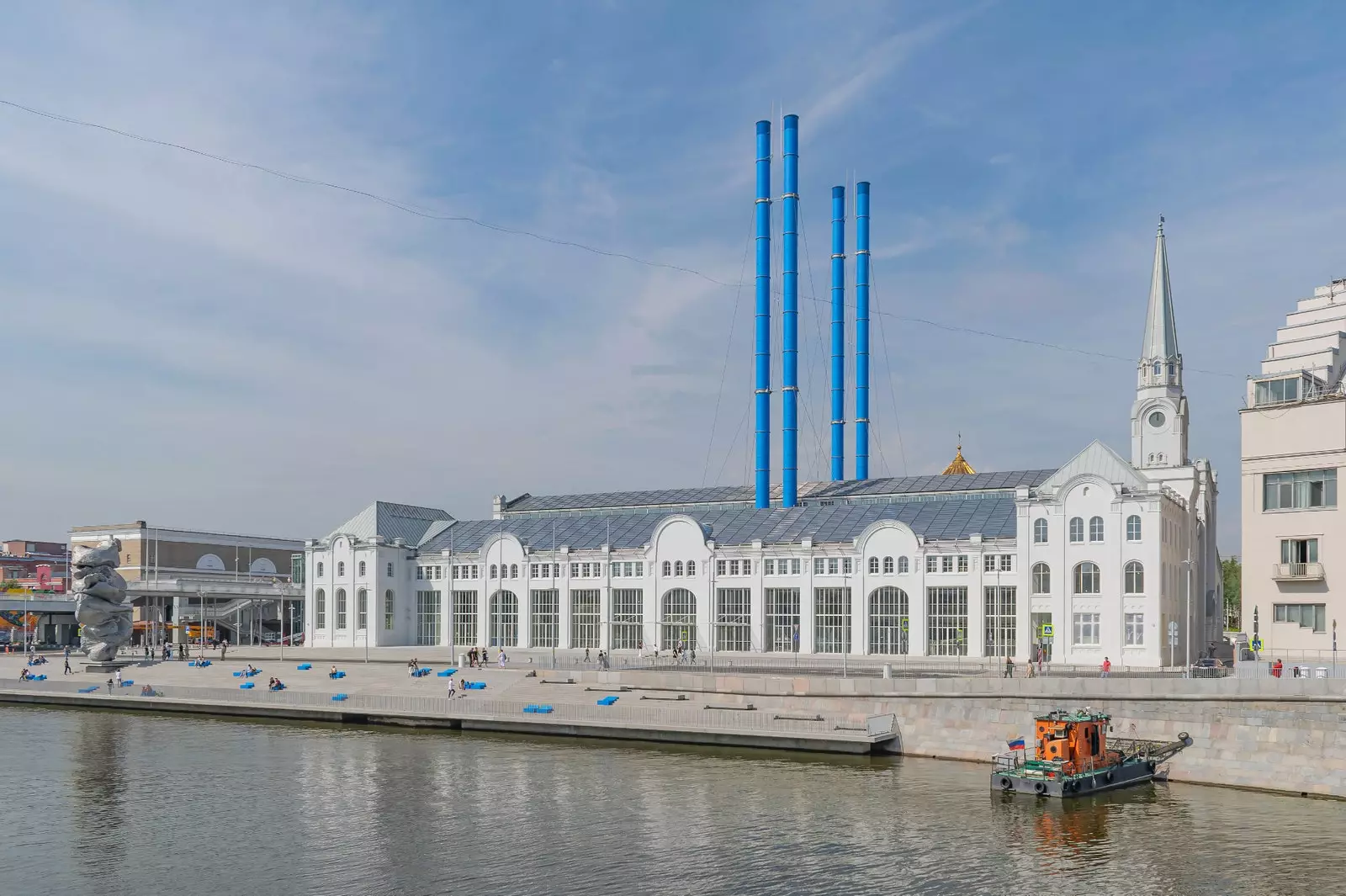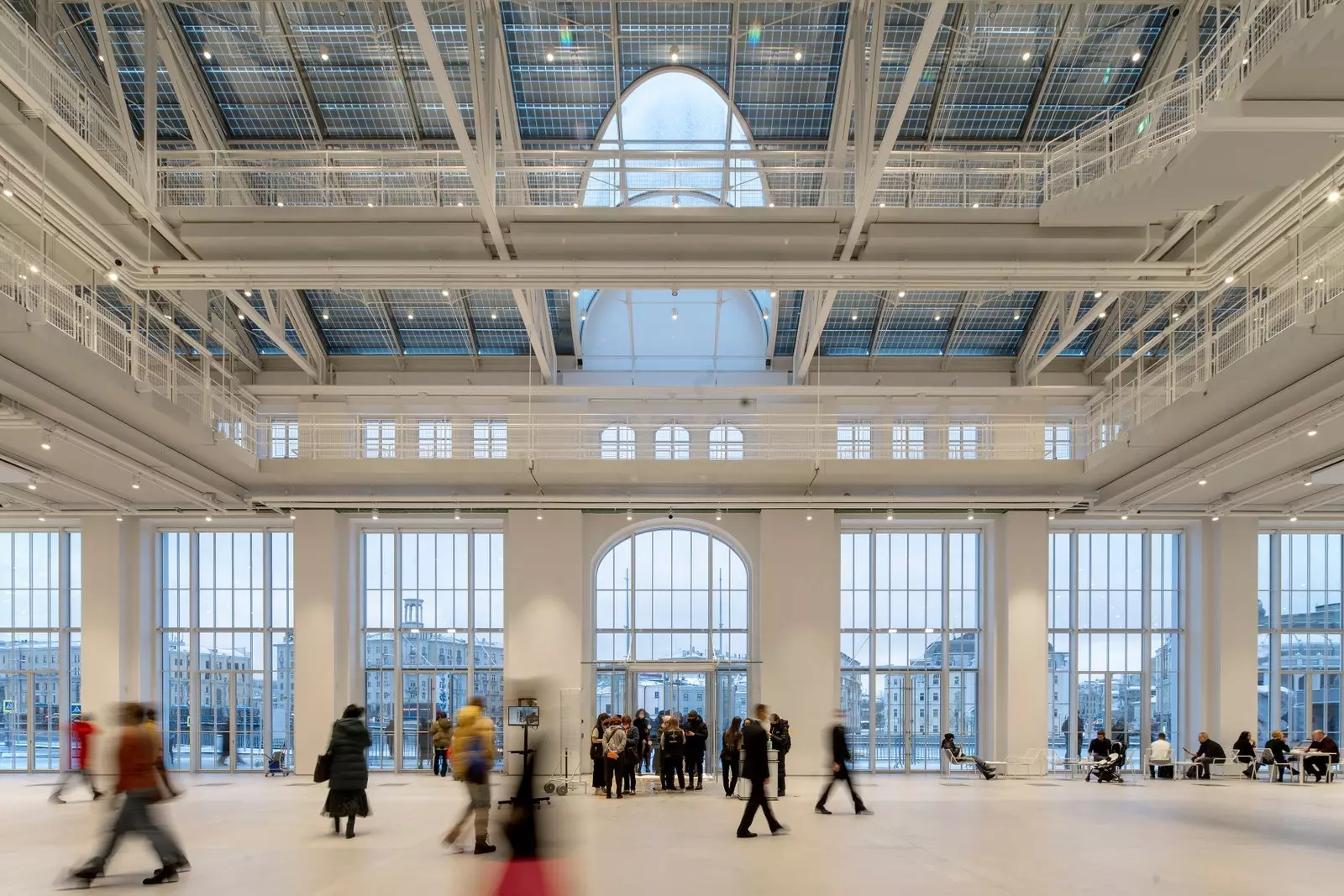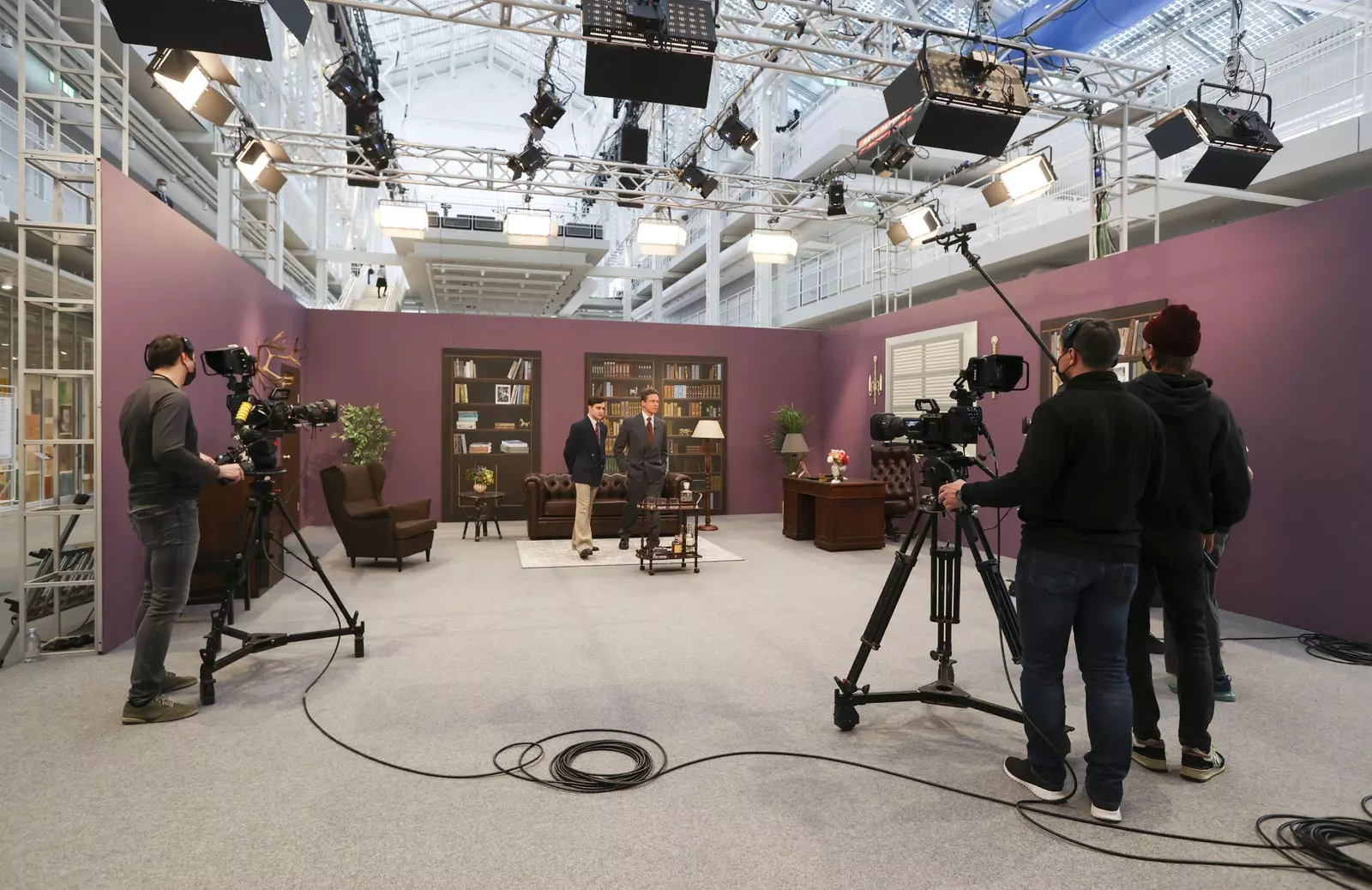The silhouette of Moscow it is characterized by the pins of its towers stuck in the perennial layer of clouds. The bell towers of the Kremlin and their defensive watchtowers. The sharp peaks of Stalin's skyscrapers. The pointed domes of their endless cathedrals and monasteries. All, in their own way, expressions of power and authority.
But if there are structures that are imposed with special rigor in this eclectic profile, those are the chimneys: gray, red and white or metallic, smoky and impassive to winter. They are the symbol to which to profess devotion and respect when the thermometer reads 25 degrees below zero.
Two new chimneys claim prominence from the pincushion of the Moscow center. The difference is that these are light blue, Malevich-blue, according to their architect. And they don't expel smoke, but look for whatever little fresh air there may be in the center of a megalopolis at a height of 70 meters to inhale it and introduce it in this new sanctuary of the capital.
Their tonality and their regenerative function represent the change experienced by the building that supports them, the GES-2, a 1907 power station converted into an art center.

GES-2 and its Malevich-blue chimneys.
THE CONTINENT, BY RENZO PIANO
Emulating the example of the billionaire Roman Abramovich, who in this same neighborhood he opened the GARAGE Foundation of contemporary art, another billionaire, Leonid Mikhelson, inaugurates GES-2 with his V-A-C Foundation. These two poles of contemporary culture consecrate a golden mile for art, which extends from the Kremlin and its museums and encompasses the two Tretyakov galleries, among other attractions.
Although they reject comparisons, GARAGE and GES-2 have similar histories. Both sponsored by oligarchs, both housed in historic buildings, and both with the aspiration of becoming a Tate Modern Oriental. If the first was Rem Koolhaas's first spade in Moscow, the second is the triumphal entry of Renzo Piano.
Like its predecessor, GES-2 is conceived as a public venue, in which the exhibition space is its main attraction, but by no means the only one. This enormous installation acts as a covered plaza, like a corridor between the river and the birch forest planted on the other side of the building.
Inside we find cafeterias, a library, a bookstore, a shop, auditoriums and work rooms... Piano identified the most characteristic of this old plant to synthesize his personality, mixture of neo-Russian style and its industrial character. An architecture of absences, which focuses both on the void and on what is built.

Inside of GES-2.
Perhaps one of the main challenges for Piano was managing the 20,000 square meters that lay ahead of him. Outside he achieves it through a facade delivered to the windows, whose simple, monochromatic joinery emphasizes the direction of the building rather than interrupting it.
The length and height are outlined in a hygienic aluminum grid, fine concrete panels and the glass crossed by the reflections of the sky, the river and the surrounding trees. The volume is imposing but manageable.
Something similar happens inside, where the premise is that the visitor knows how to orient himself along three floors and numerous rooms. A central 'Avenue' guides the view from the atrium, all under a metallic structure that maximizes the low light of winter. The routes define themselves and they uncover the sustainable nature of the building.
THE CONTENT, BY RAGNAR KJARTANSSON
The entrails and mechanisms of this ship are honest before the visitor, who feels like a participant in everything, as in a public square (even admission is free). One is part of an action in development, where the exhibitions welcome and expel it in an organic way.
Different ateliers, reading spaces, grandstands or children's workshops work separately and together, each at its own pace. The hard part is choosing. but right away The main activity is striking, a "living sculpture", as defined by its author, the Icelandic artist Ragnar Kjartansson.
This is the 14-week-long installation Santa Barbara, in which they shoot again, a la ruse, the telenovela of the same name, a television milestone in post-Soviet Russia (It was one of the first foreign series issued).
As a good connoisseur of the city and the country, Kjartansson accompanies the transformation of this building with a broader question about the metamorphosis of Russian society: How not to be colonized?, which puts the subtitle to his work and which proposes how "to build a dialogue with Western culture on an equal footing, without losing one's own voice".
Kjartansson part of an irony, a game, but the dimension (both physical and philosophical) of his proposal is much deeper and evaluates with the current perspective the weight of experience and the past. Something especially juicy in a country that still seems to be searching for its identity, that leans on nostalgia and insists on defining itself in opposition to the West...
Although, yes, Kjartansson himself insists that it is not a question of colonization, but of influence and cultural exchange. Ever since those first Santa Barbara broadcasts, reality settled in Russia harshly and illusions and hopes take a different course.

Saint Barbara, by Ragnar Kjartansson.
OTHER SAMPLES
The building itself shows that drift. After having flirted with marginal currents (in 2017 it hosted the Geometry of Now electronica festival), this remodeling scares away any ghost of counterculture.
It also stays away from official aromas, but it is inevitable to perceive how a patriotic bias filters through the transparency, good intention and originality of the exhibition. Nostalgia and that idealization of the past that are seen in Saint Barbara they also appear in the other samples.
The best example is the beautiful photography collection To Moscow! To Moscow! To Moscow!, in which Kjartansson and Ingibjörg Sigurjonsdottir, clearly alluding to Anton Chekhov, invoke the capital as a symbol of unattainable change and the elusive aspirations of a full life.
We come face to face with the recent past of the country, with its frustrated dreams and its prospects of reuniting with what could have been. And more of the same in the basements, which compile with more faith than success some of the pop culture elements of the last decade and leave in the air the question of where it is going.
This island, not so long ago a dilapidated post-industrial landscape that was home to raves and seedy bars, now looks a face perhaps not so sincere and spontaneous, but better made up.
The city follows this trail, with the GES-2 as one of its main embellishments. And beyond whether we like it or not, whether or not it is the best stimulus for an increasingly scarce type of urban culture, his execution is impeccable.
For controversy, one can stay in front of the entrance, where shows off the spectacular Big Clay #4, by Swiss sculptor Urs Fischer.
